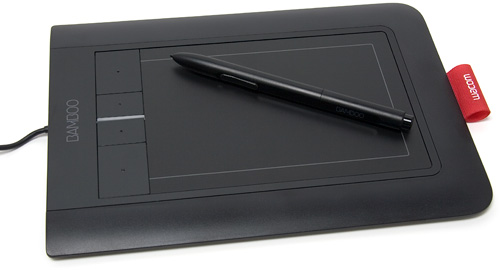Doodles
When I teach genetics, I often make use of gene symbols and sometimes calculations. These can be tricky to get into the computer using a keyboard. A low-cost solution is the use of a "Bamboo Pad" from Wacom. It is essentially a slate that can take information drawn upon it using a finger or its stylus. A very nice feature is that it hooks into the computer using a USB port. It works on both Mac and PC. I haven't used mine much because there is a little bit of awkwardness in trying to gauge where to write on the slate and where the output will appear on the screen. I got mine for less than $100. However, wireless versions are only slightly more expensive than that.
Since I got an iPad, I have never looked back. There is something very seamless about being able to see what you are drawing and being able to touch it up right on the image. These are, of course much more expensive. I am still using a second-generation iPad. It works just fine for me, and although I am looking to upgrade, I am in no rush because it is working just fine for now. The software I use for my doodles will be incorporated in the "Mac" section of this blog. In particular, I will gush about the software "Explain
Everything". With that, I can create detailed solutions as multimedia for my more challenging questions.
Audio
Most computers come with an onboard microphone. These get the job done, but typically are fairly tinny and thin. I use the Mac microphone for my dictation, and it does a very good job. However, if I am creating audio that goes with my multimedia productions, I prefer to use my Yeti microphone. This has several options for the various uses. You can have a solo voice input, you can do a one-to-one interview, or you could set it up for a round table discussion.
This thing is so sensitive, I had to twist a coat hanger into a frame to support an old nylon stocking to soften the "P" sounds I make when I am speaking. Otherwise, you get a "poof" sound with some words.
Sometimes I use a laptop computer alongside of an iPad and combine the two images. Both machines will record all the audio, But I stripped the audio feed from the iPad because it is particularly weak. The Yeti creates a deeper, more robust sound than the iPad.



No comments:
Post a Comment